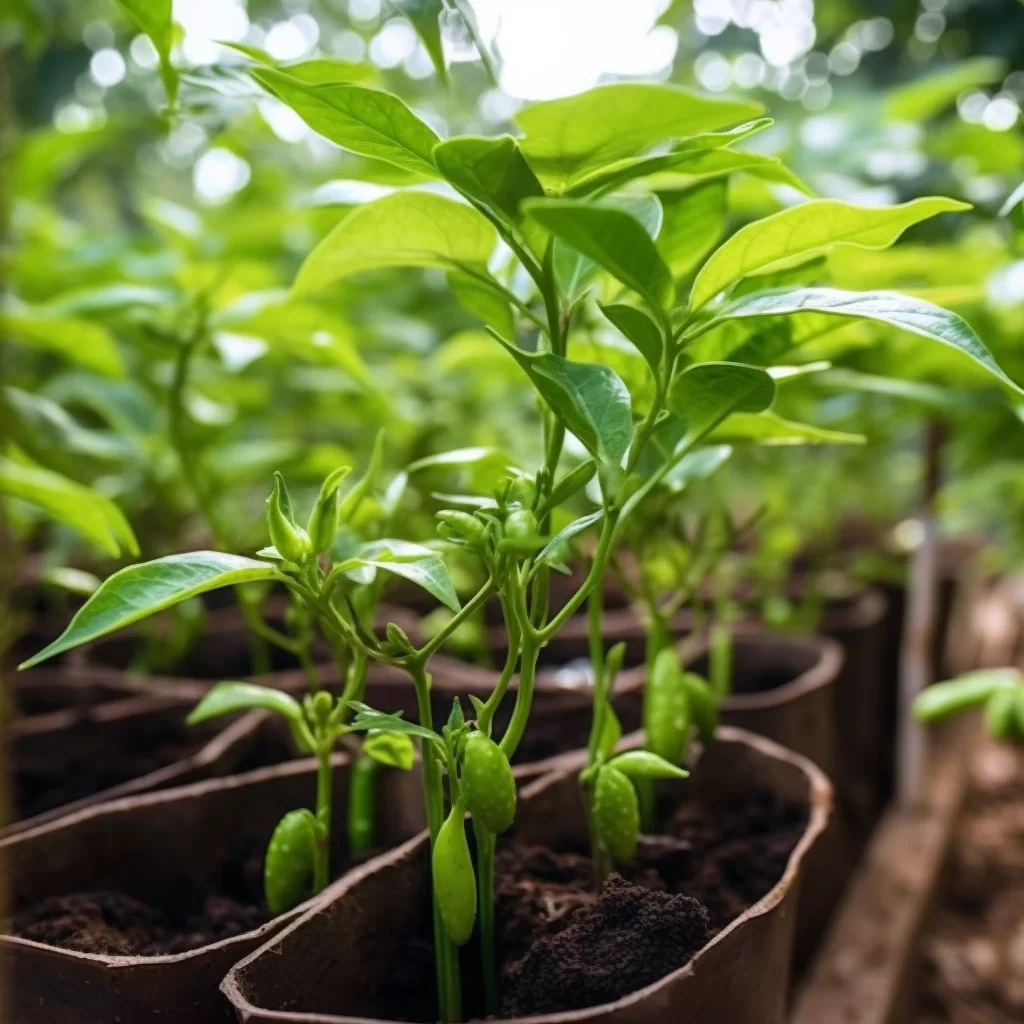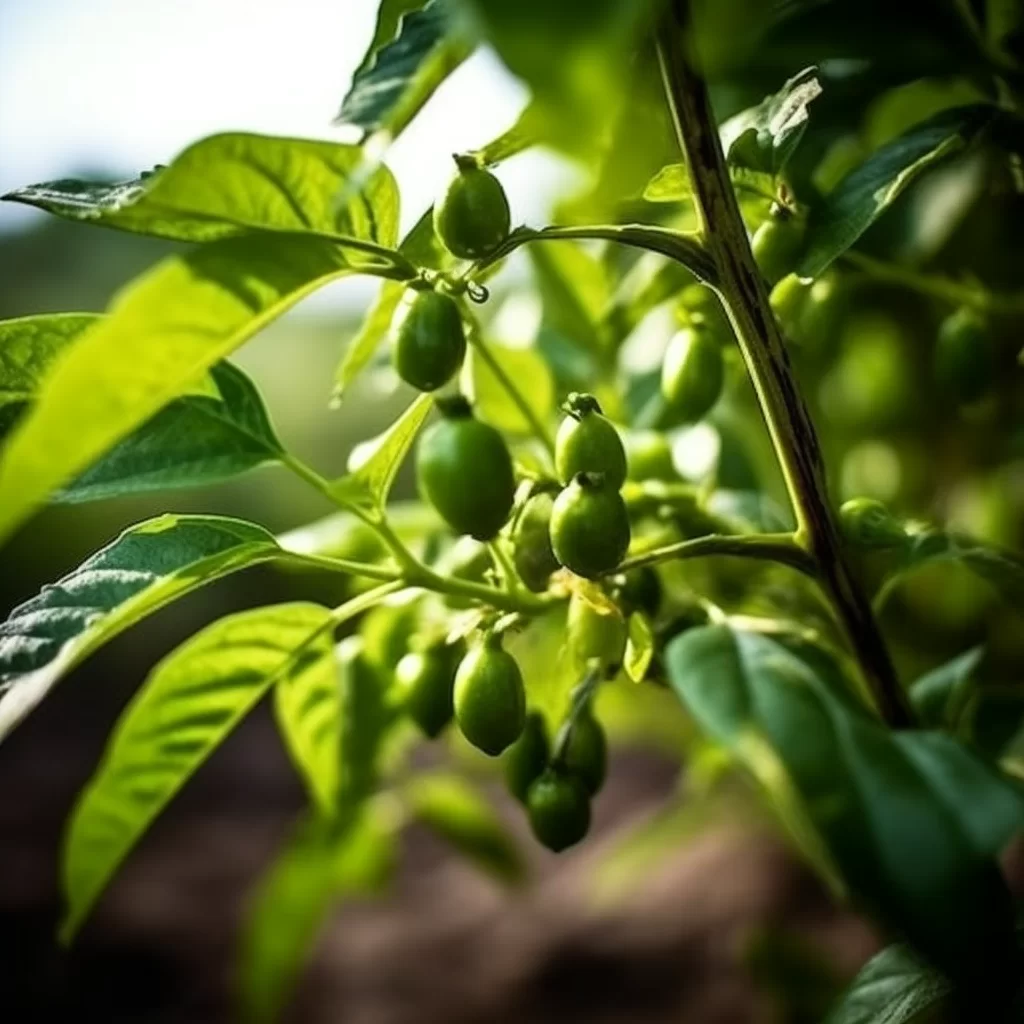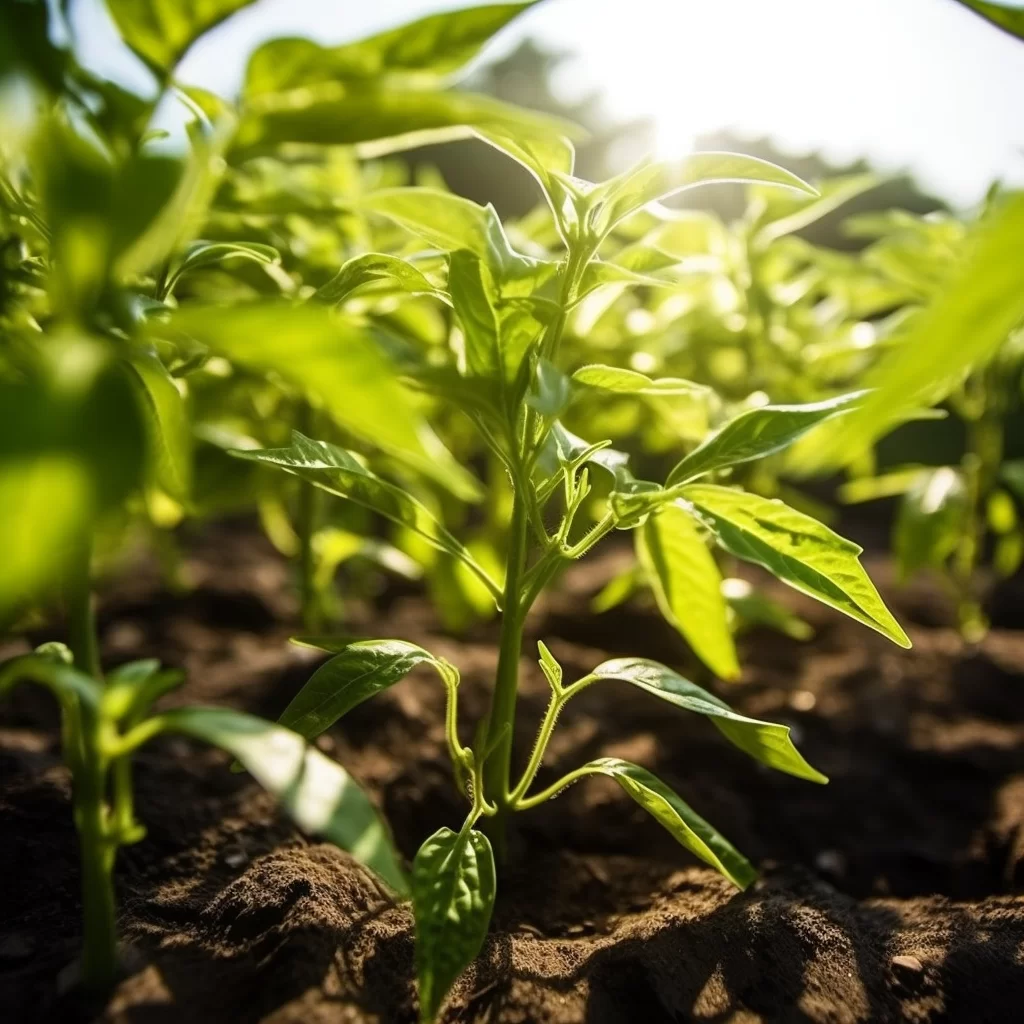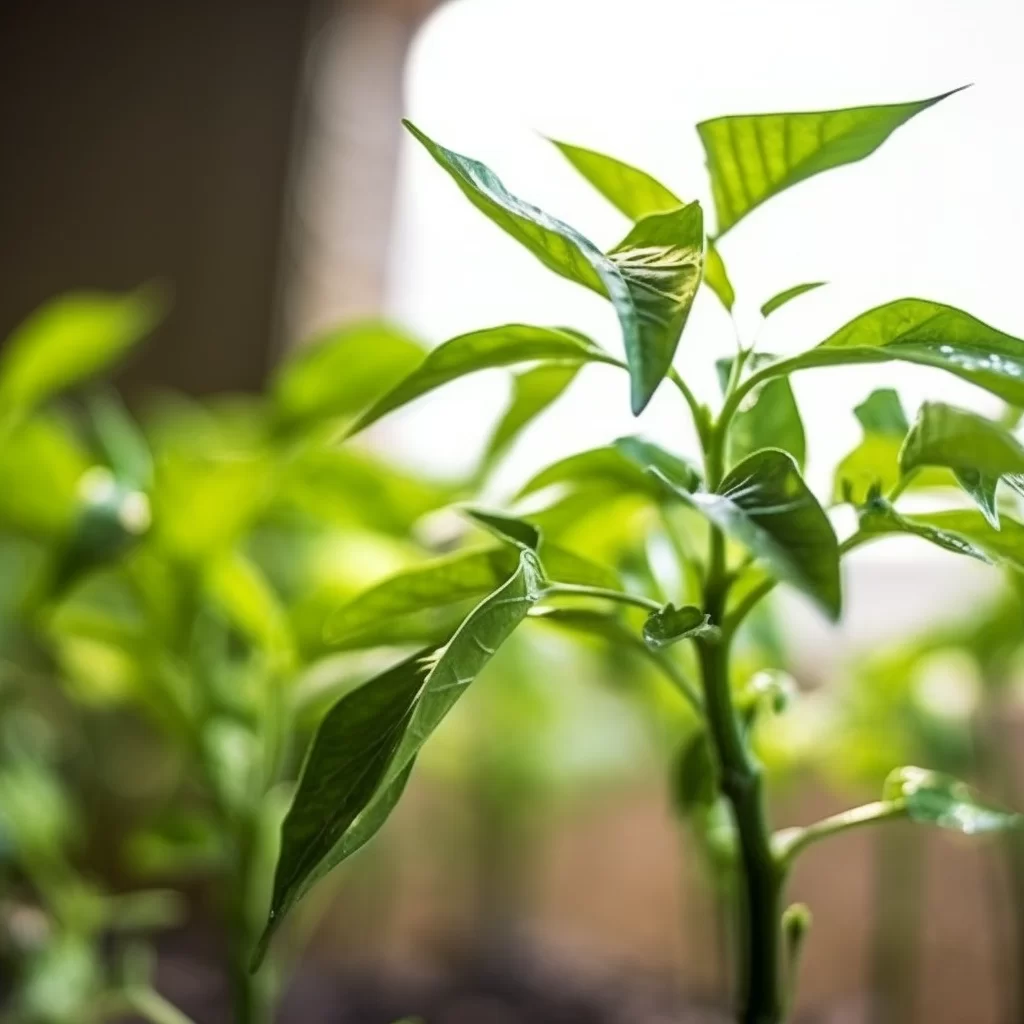Story of Day :
Contents
Jalapeno Pepper Plant: Complete Guide and Care Tips
If you have a love for all things spicy, then it’s highly likely that you’ve come across jalapeno peppers at some point in your food journey.
From being used to add an extra kick to salsas and sauces, or even just as a topping on your favorite dish, jalapenos are incredibly versatile and mouth-wateringly delicious.
But what if we told you that growing your very own jalapeno pepper plant was not only a fun hobby but also allows for the freshest ingredients to be used in all of your culinary creations?It’s true! By taking the time and effort to cultivate and care for your own jalapeno pepper plant, not only will you have access to the freshest possible ingredients but also the satisfaction of knowing exactly how they were grown.
There’s something truly special about being able to harvest fresh produce straight from your garden – whether it be for use in home-cooked meals or simply snacking on them raw.
So why not give it a try? Growing a jalapeno pepper plant is an easy way to add some spice (and flavor!) into your life while also enjoying all of the benefits that come with gardening as a hobby.
Choosing the Right Jalapeno Pepper Plant
If you’re planning on growing jalapeno peppers, it’s essential to choose the right type of plant that suits your preferences.
With a vast selection available at nurseries and online stores, it can be daunting to pick one, but it’s worth researching and deciding beforehand.
Different varieties have varying levels of heat intensity, so if you’re looking for a milder taste, consider TAM Mild Jalapeño or Early Jalapeño.
For those who enjoy spicier dishes with an extra kick, Mucho Nacho Jalapeño could be the perfect choice. Before purchasing any jalapeno pepper plant, research its characteristics carefully to ensure it meets your requirements.
Before purchasing any jalapeno pepper plant, research its characteristics carefully to ensure it meets your requirements.
Some varieties may have different growth patterns or sizes of fruit than others.
This will help you decide which type is best suited for your garden or indoor space with enough sunlight and nutrients for optimal growth and production of fruit throughout the season.
Choosing the right variety is crucial as this will impact both the flavor and quantity of your harvest!
- The Early Jalapeño is perfect for those who want an early harvest as it produces fruit sooner than other varieties.
- The Mucho Nacho Jalapeño is larger than other types so if size matters to you this may be what suits your need.
- If heat level does not matter much then TAM Mild Jalapeños were developed by Texas A&M University specifically to provide peppers with less heat.
Planting Your Jalapeno Pepper Plant
Jalapenos are a popular chili pepper that grows best in warm temperatures.
If you’re planning to grow jalapenos in your garden, it’s essential to wait until after the last frost before planting them outside.
The reason for this is because jalapenos thrive in warm weather, and frost can damage their delicate leaves and stems.
Once the weather has warmed up, find a spot that gets full sunlight for most of the day and ensure that the soil is well-draining.
It’s also crucial to check that your soil’s pH level falls between 6-7 as jalapenos prefer slightly acidic conditions. To create an ideal environment for your jalapeno plants, consider starting them indoors several weeks before transplanting outdoors.
To create an ideal environment for your jalapeno plants, consider starting them indoors several weeks before transplanting outdoors.
This will give them ample time to develop strong roots before facing any outdoor challenges such as wind or pests.
When it comes time to transplant, carefully transfer each seedling into its own hole in the ground with at least 18 inches of space between each plant.
As long as you provide enough warmth, sunlight, and water while monitoring soil pH levels regularly throughout the growing season; you’ll soon be enjoying fresh homegrown jalapenos straight from your garden!If you’re planning to start a garden, one of the first things you need to do is dig holes for your plants.
It’s important to make sure that the holes are twice as wide as the root ball of your plants and have an 18-inch gap between each hole.
Once you’ve dug the holes, carefully place each plant into its respective hole, ensuring that it’s at the same depth it was previously growing.
Then cover it with soil and give it a good watering.This process may seem simple, but following these steps can help ensure that your plants thrive in their new home.
By providing enough space for roots to grow and making sure they’re planted at the correct depth, you’re giving them their best chance at establishing themselves in your garden.
After planting, be sure to water them well so they can take in all the nutrients they need from the soil around them.
With a little care and attention during planting, you’ll be on track to having a beautiful garden full of healthy plants!
Watering and Fertilizing Your Jalapeno Pepper Plant
 Jalapenos, being a moisture-loving plant, require a consistent supply of water to grow healthily.
Jalapenos, being a moisture-loving plant, require a consistent supply of water to grow healthily.
However, it is crucial to ensure that the plants are not overwatered as this can lead to root rot and other diseases.
The best way to avoid this is by allowing the soil to dry out slightly between watering sessions.
If you’re uncertain about when to water your jalapeno plants, simply stick your finger into the soil up to your second knuckle – if it feels dry at that depth, then it’s time for more water!It’s essential for jalapeno growers not to overlook their plant’s watering needs as consistent moisture is critical for healthy growth.
While providing an adequate amount of water regularly ensures robust production from these pepper plants, excess watering can damage them instead of helping them thrive.
Therefore it’s important always check for signs before giving any additional water.
It is advisable always letting the soil dry out slightly between each watering session and gauge its hydration level using the finger test approach: inserting one’s fingers into the soil up until their second knuckle; if they come back feeling dry or somewhat damp but never wet; then go ahead with another round of irrigation!If you want to grow healthy jalapeno pepper plants, then using fertilizer is crucial.
By providing your plants with a balanced fertilizer that contains equal amounts of nitrogen, phosphorus, and potassium alongside calcium, you can expect great results.
However, it’s important to be mindful of how much fertilizer you use since over-fertilizing can cause leaf burn which may ultimately harm or kill your precious plants.Using the right kind of fertilizer will help ensure that your jalapeno peppers grow strong and healthy.
A balanced formula containing essential nutrients like nitrogen, phosphorus, potassium and calcium goes a long way in promoting their growth.
But don’t go overboard with the fertilization as an excess amount can lead to leaf burn which might even end up killing the plant.
So take care while feeding your jalapenos and watch them thrive without any worries!
Harvesting Your Jalapeno Pepper Plant
Jalapenos, a type of chili pepper commonly used in culinary dishes, typically take anywhere from 60 to 90 days to become ready for harvest after being planted.
However, if the variety turns red instead of green when ripe, they can be picked once they reach their mature stage and have turned a vibrant shade of red.
It’s important to ensure that the jalapeno peppers are firm and glossy with no signs of wrinkling on its skin before harvesting them.Jalapenos are known for their bold flavor and heat that can add an extra kick to any dish.
These peppers need proper care and attention before they reach full maturity in order to develop their unique taste.
Once grown, it’s best not to wait too long before picking them – this will ensure that they are fresh and not overripe or overly spicy.
Harvesting them at the right time is key; look out for firmness and glossiness with no signs of wrinkles on its skin as an indication that your jalapeno is ready for use in your favorite recipes!If you’re planning on harvesting jalapeños from your garden, it’s important to take some precautions to avoid any potential skin irritation.
Capsaicin oils are what give these peppers their signature heat, and they can irritate the skin if not handled carefully.
The best way to protect yourself is by wearing gloves while picking the peppers, as this will help prevent any accidental contact with the capsaicin oils.
When it comes time to harvest your jalapeños, there are a few methods you can use.
Gently pulling each pepper off the stem is an option, but using pruning shears is often recommended for a cleaner cut and easier handling of the fruit.
Regardless of which method you choose, be sure to handle them with care and keep in mind that these spicy little peppers pack a big punch!
Common Problems When Growing Jalapeno Pepper Plants
When it comes to growing jalapeño plants, there are a few common issues that you might encounter.
One of the biggest problems is insect infestations, particularly aphids or spider mites.
These pesky critters can feed on the leaves of your jalapeño plant and ultimately cause wilting, yellowing or even dropping of leaves.
To avoid this issue, it’s important to keep a close eye on your plants and check them frequently for any signs of insect activity so that you can catch any potential problems early.If you’re new to growing jalapeños or any other type of plant, it’s worth noting that monitoring your plants regularly is key to keeping them healthy and thriving.
By doing this, you can identify potential issues before they have a chance to do serious damage to your crop.
So if you’re looking forward to harvesting some spicy peppers from your garden this season, make sure you take the time to keep an eye on your jalapeño plants and address any concerns as soon as they arise!Blossom-end rot is a common problem that can affect many types of fruits, including tomatoes, peppers, and eggplants.
It occurs when a black spot appears on the end of the fruit opposite from where it was attached to the stem.
This unsightly blemish is caused by a lack of calcium in the fruit and can be exacerbated by insufficient watering conditions.While blossom-end rot may not affect the overall taste or edibility of the affected fruit, it can still be frustrating for gardeners who want their crops to look as perfect as possible.
Fortunately, this condition is relatively easy to prevent with proper care and attention.
By ensuring that your plants receive enough water and nutrients throughout their growing season, you can help ensure that they produce healthy and beautiful fruits free from blossom-end rot.
Conclusion
If you love gardening and spicy food, growing a jalapeno pepper plant can be an exciting and fulfilling hobby for you.
The satisfaction of seeing your plants grow from seeds to producing ripe and flavorful peppers is unparalleled.
But it’s important to follow some basic guidelines to make sure your plants are healthy and produce a good harvest.
Choosing the right variety, ensuring proper drainage in the soil, watering regularly with appropriate fertilizers are some key steps in this process.
With these measures in place, you’ll be able to enjoy fresh jalapenos throughout the growing season.In addition to being fun, growing your own jalapeno pepper plant can also provide many other benefits.
Apart from having access to fresh ingredients for cooking dishes like salsa or guacamole all year round, this activity can also lead to improved health habits by encouraging outdoor exercise and promoting stress relief through gardening therapy.
Furthermore, by adopting eco-friendly practices such as composting or reducing pesticide use on your property, you can contribute positively towards preserving our planet’s biodiversity while enjoying nature’s bounty at home!